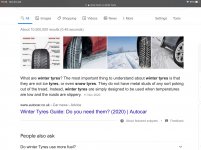Well, we've had 6 inches of snow overnight and it's a good time to test the Panda's abilities (essential journey before you ask).
I need to feed some sheep up the road so loaded the Panda with some hay and set off up the 14% incline for the 2 miles(all up hill). Met a lad on a quad bike who said I'd never make it but I never lost traction once. I've got Hankook Winter tyres on which seems brilliant, even stopping on the downhill return.
Sheep very hungry so had to get more hay. Can get much more in the Land Rover so did the next trip in that. Lost traction numerous times and was sideways on more than one occassion. OK, so the Defender can go through deeper mud but I was astonished how good the Panda actually is.:slayer:
I need to feed some sheep up the road so loaded the Panda with some hay and set off up the 14% incline for the 2 miles(all up hill). Met a lad on a quad bike who said I'd never make it but I never lost traction once. I've got Hankook Winter tyres on which seems brilliant, even stopping on the downhill return.
Sheep very hungry so had to get more hay. Can get much more in the Land Rover so did the next trip in that. Lost traction numerous times and was sideways on more than one occassion. OK, so the Defender can go through deeper mud but I was astonished how good the Panda actually is.:slayer:


